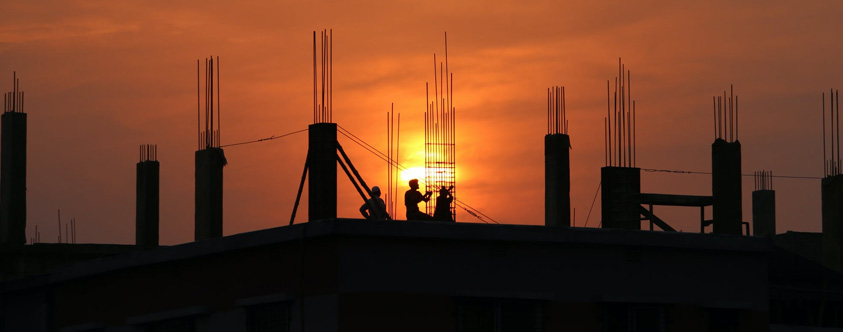Everyone seems to be waiting for India’s realty bubble to burst. But, in reality, the sector is on a path of course correction and bridging gaps to move to the next level of growth.
India’s real estate sector is currently amid a prolonged slump. In December last year, sentiments among the sector’s stakeholders revived after two consecutive quarters of pessimism. Unfortunately, the onslaught of the COVID-19 pandemic is expected to drag the rising outlook into the red zone once again. As a result, there is increased cynicism about the sector’s potential.
I believe, this is a time to look at things differently.
I firmly believe that the slowdown is neither sector-specific nor systematic. Instead, my view is that the downward spiral is part of the sector’s growth journey. If the realty bubble had burst, analysts could not have projected the industry to touch a market size of USD 1 trillion by 2030 or pegged its contribution at 13% of the country’s gross domestic product by 2025.
In my assessment, the current scenario is leading to a sectoral correction on several fronts.
Historical correction
The National Urban Housing and Habitat Policy, which laid the foundation for community housing, was introduced in 2007. The lack of overviewing regulations led to an influx of builders and too many speculating investors. These factors led to a steep rise in overhead costs and a climb in building prices. Besides, there was a lack of transparency in sector operations.
The introduction of the Real Estate Regulation and Development Act (RERA) in 2017 addressed these challenges. RERA provides a robust regulatory overview to the sector. In the short-term, the legislation may cause an unprecedented rise in the number of litigations and, over the long-term, it augurs well for the sector. RERA levels the playing field for the buyers and sellers – hitherto a missing component. The legislation provides for greater transparency with builders required to disclose property prices upfront. It also enables accountability by penalising developers for project delays. Measures such as the creation of an escrow account assure proper use of investor money. The legislation is leading to a much-needed sectoral churn and consolidation.
Mindset change
India’s real estate boom in the new millennium was driven by robust economic growth and demand from buyers. When the market peaked at the beginning of the last decade, developers were under tremendous pressure to deliver projects. As a result, the quality of construction and process orientation took a hit. This led to a cash crunch in the sector and ultimately affected the project delivery timelines. As cases of project delays became rampant, home-buyers became wary of investing.
For a large section of the population, purchasing a property is the most significant expense of their lifetime. The onus is on the developers to deliver quality projects on time. Over three decades, this has been the mantra of my success in the sector. The proof is in the pudding: even as property prices nosedived in 2019 and some developers were dragged into insolvency, branded developers gained ground. The top players reported a ~5% quarter-on-quarter growth in sales and corresponding revenue growth. Players that focused on process, maintained financial discipline and were uncompromising in their quality standards moved forward.
Fiscal correction
With the dawn of affordable housing and Smart Cities mission, the demand for property in India is set to multiply over the next few years. However, dampened investor confidence has led to an unprecedented cash crunch in the sector. Further, factors such as the NBFC crisis and the slow pace of sales recovery are adding to the liquidity squeeze. The number of insolvencies also increased during the last year – highlighting the cashflow distress faced by many developers.
To address the cash crunch in the sector, the government has introduced several measures. The launch of Real Estate Investment Trust (REITs) and infrastructure investment trusts (InvITs) have been prominent measures. By enabling retail exposure to the realty sector, these instruments provide a sustainable solution to the liquidity crisis. A robust policy framework will protect investor interests. For instance, REITs provide assured returns to investors through a compulsory dividend distribution policy. The liquidity will also improve with the relief measures by the Reserve Bank of India (RBI).
The real estate sector will play a key role in India’s quest to become a USD 5 trillion economy. From office spaces to warehouses, from industry-specific parks to manufacturing zones, the role of the commercial real estate sector in fulfilling this aspiration cannot be overlooked. Construction activities are associated with over 200 allied industries including cement, steel and sand. The development of the realty sector thus has a multiplier effect on the economy.
Overall, the numbers indicate that there is no bubble. But yes, there is a definitely a bridging of gaps which will help the real estate sector coming emerge stronger.






